Cascules
Welcome
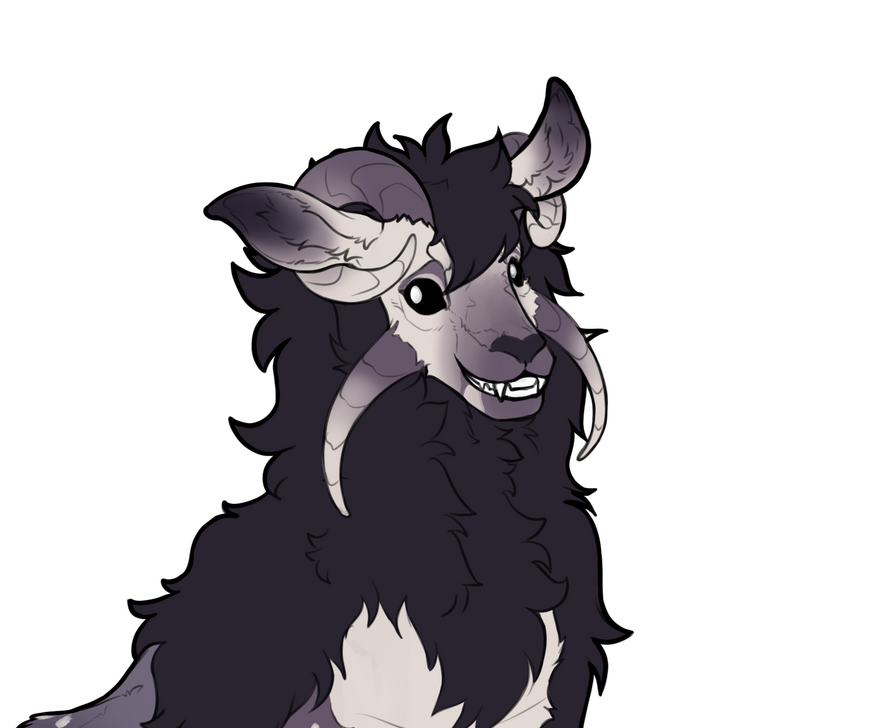
Cascules are a closed species created by Nakaru, or better known as Eve. They were made with the purpose of bringing joy to both herself as well as others. We do sincerely hope you find fun and comfort in this species as much as we have. Please stay awhile, learn, and grow with us. Join our discord and deviantart to keep up with newest developments and participate. Can't wait to see you there!Cascules are peaceful creatures who value their social lives and safety of each other above all else. They are playful and kind hearted by nature. Due to this playful passive nature however, they can be easy prey for some of the evils of their world. How will your Cascule survive? Will they stick with the herd or rough it on their own? Only you can decide.
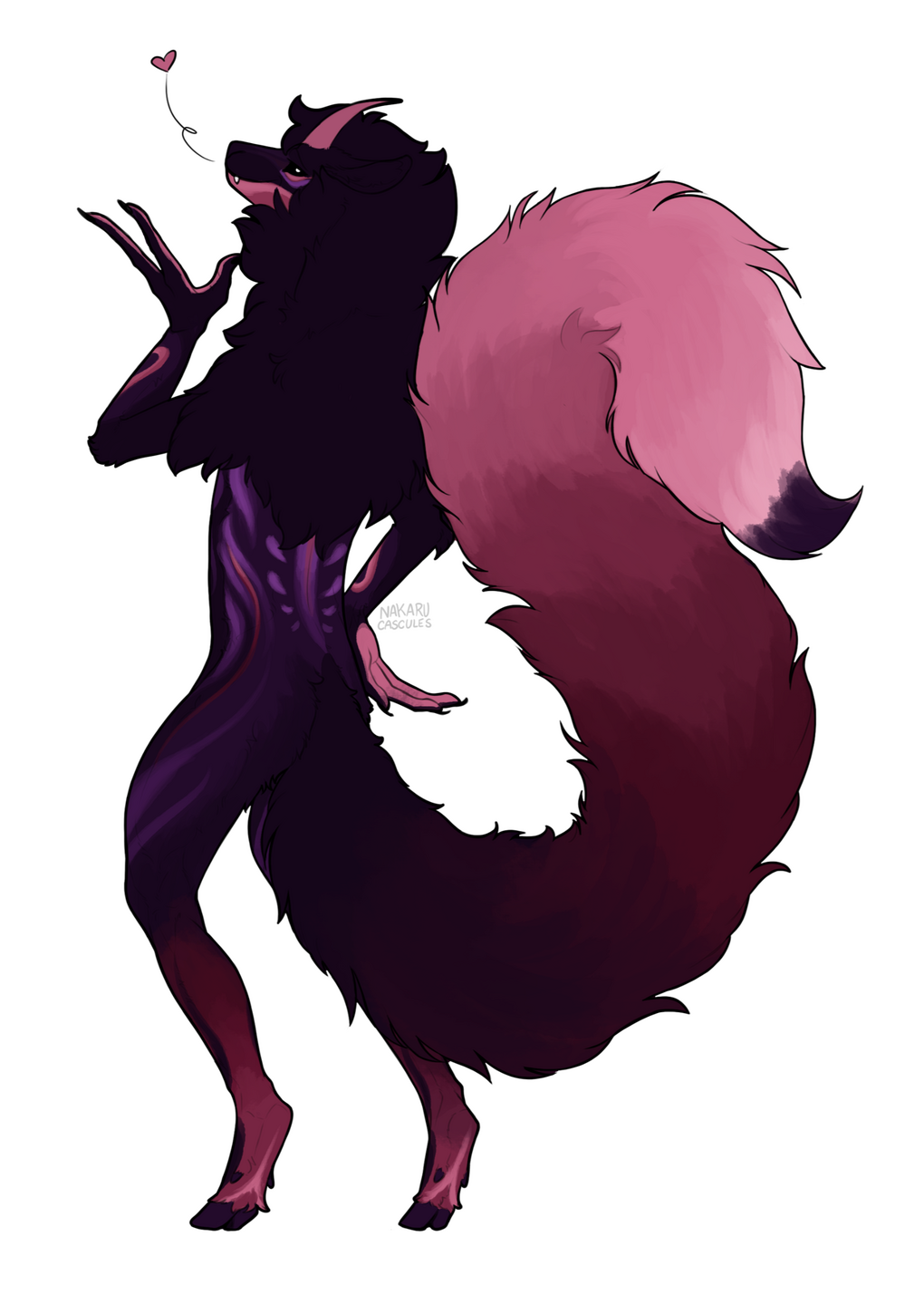
SirenThe smallest and weakest subspecies of Cascule. They are often outcast, used as sacrifice, or simply looked down upon. This small subsect of creatures only makes up a small portion of the overall species population. Nobody is quite sure why or what happened to them, but they did not develop the height nor the iridescent patches that the more common members of their species possesses. These members only source of warning against predators is their long bushy tail, a trait that is unique to them as almost all members of the subspecies possess it. This tail is usually brightly coloured on the underside, but not always. Due to it's large size, it is often spotted by predators and makes the Siren an easy target. Due to this, Flashers and Lumes often do not let them on guard duty.Sirens, for unknown reasons, seem to have a rather pompous and cocky air about them. They have been observed rejecting other Cascules of higher standing when being courted, as well as seemingly expecting to always be courted, rather than doing any courting for themselves. They strut around very confidently despite being looked down upon. This cocky attitude is possibly one of the reasons they are disliked by their peers. Scientists wonder if this is a natural behaviour or a learned one.
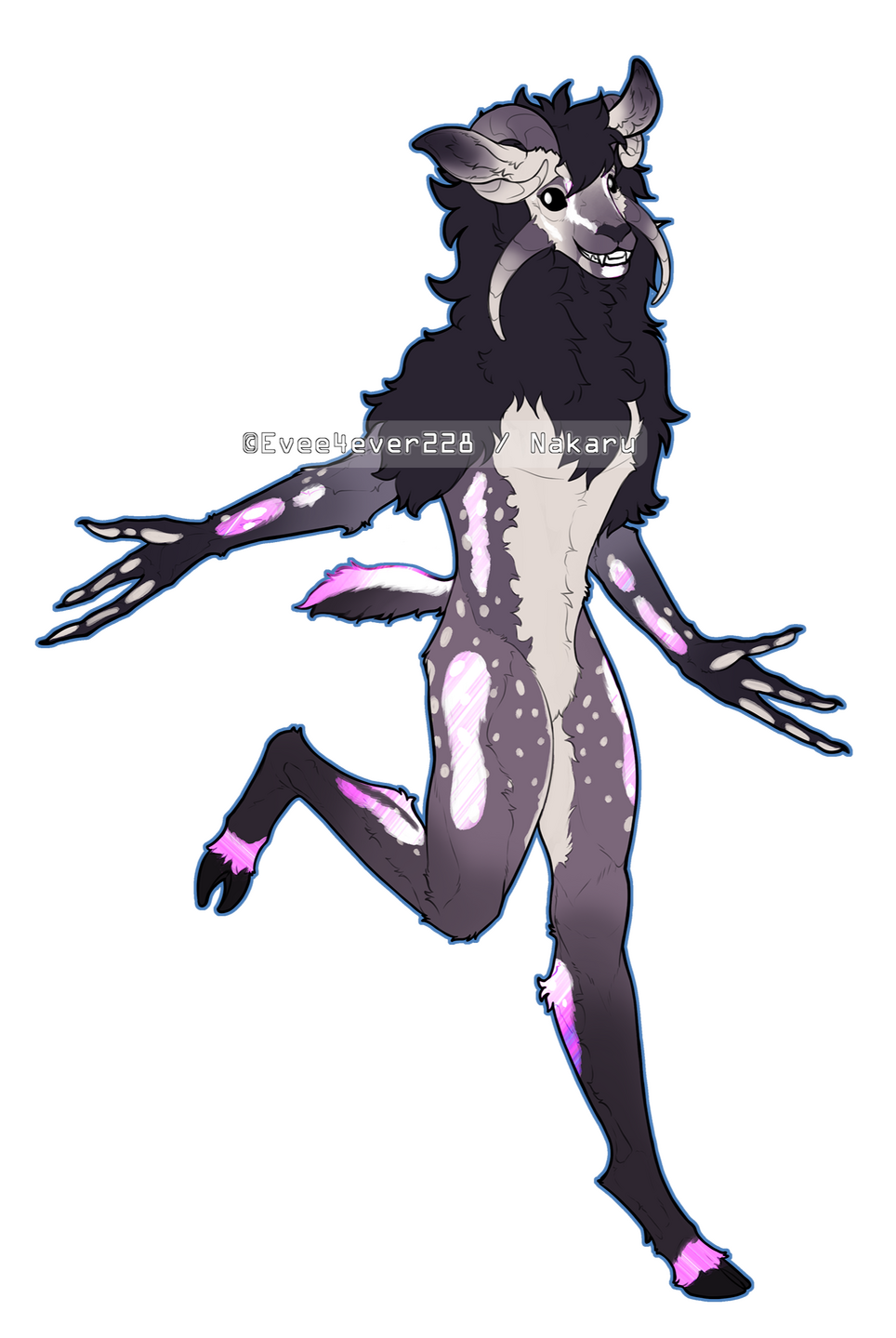
Flashers
Name subject to change.The most common subspecies of Cascule. These are the most likely of the creatures you are to encounter, with them making up approximately 70-85% of the Cascule population. The Flashers are the proud owners of iridescent patches of fur that they, true to the origin of their name, flash to communicate with each other. The reflected light from the patches are invisible to most species other than themselves, offering a safe and effective way of silent communication between each other. It is also speculated that these patches are an important aspect to their mating and bonding rituals. Scientists are unsure what the fur is made of that gives them this unique ability. Due to this lack of understanding, these creatures are often hunted and killed under the guise of research. The patches are cut off and the rest of the Flasher is discarded.
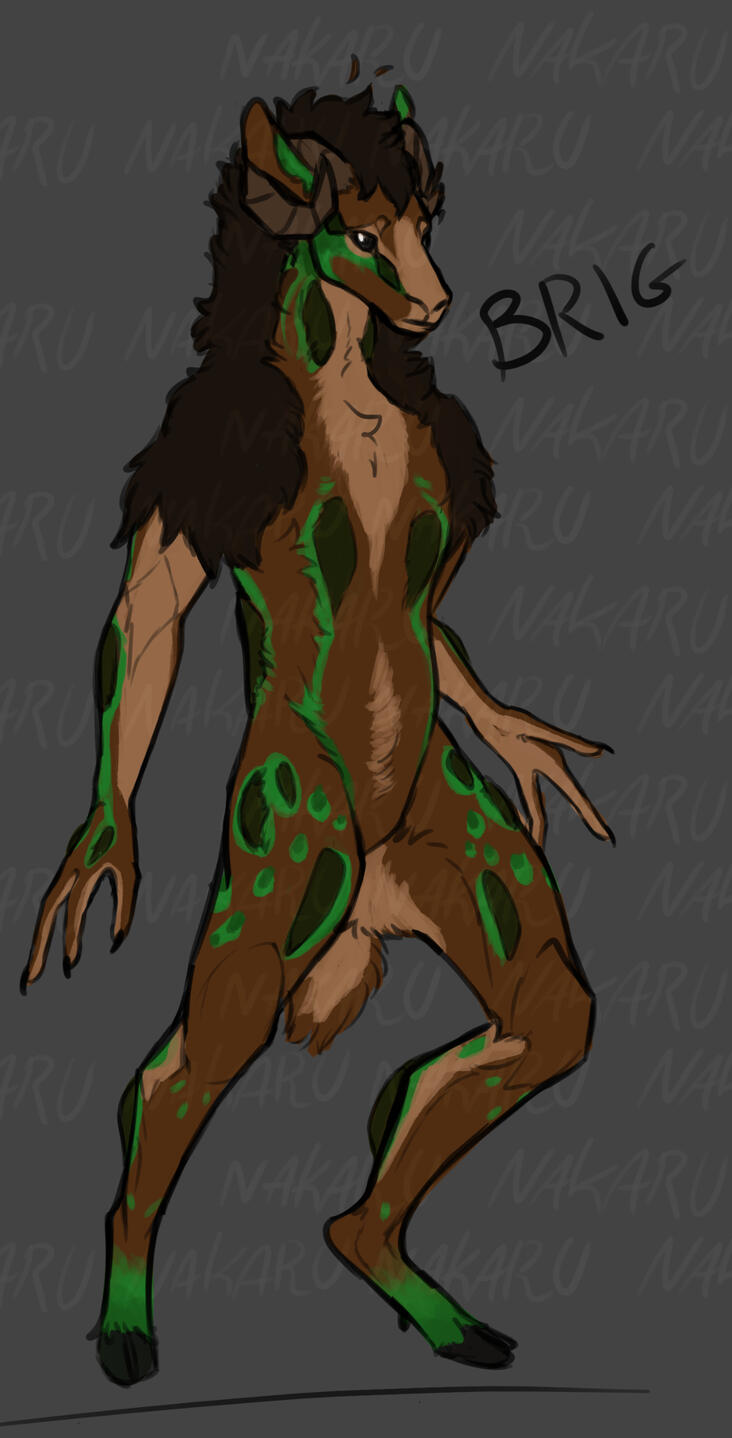
LumesThe rarest and most revered subspecies of Cascule. This subspecies is a genetic anomaly amongst it's kind. These creatures are often worshiped as deities, and they themselves believe themselves as descendants of the gods. Small sacks under their skin glow at will, allowing them to become bioluminescent. When in danger these lights will flash rapidly, confusing and sometimes scaring predators, while also alerting other Cascules about the danger. It has been observed that different flash patterns indicate different levels of danger and different predators. They make excellent night guards as, unlike the ???, they do not require outside light in order to communicate effectively. If a Lume is present in the herd, it is often appointed as the leader.A small genetic pool leaving them with an extremely high mortality rate amongst lambs of this subspecies, alongside the fact that they rarely meet one another in their travels, makes them extraordinarily rare.Lumes are encouraged from a young age to shave the undersides of the necks and chin. Powerful bioluminescent sacks can be found in these areas, and are vital to effective communication. While they are not forced to, it is highly looked down upon not to and may result in estrangement or exile from the herd.
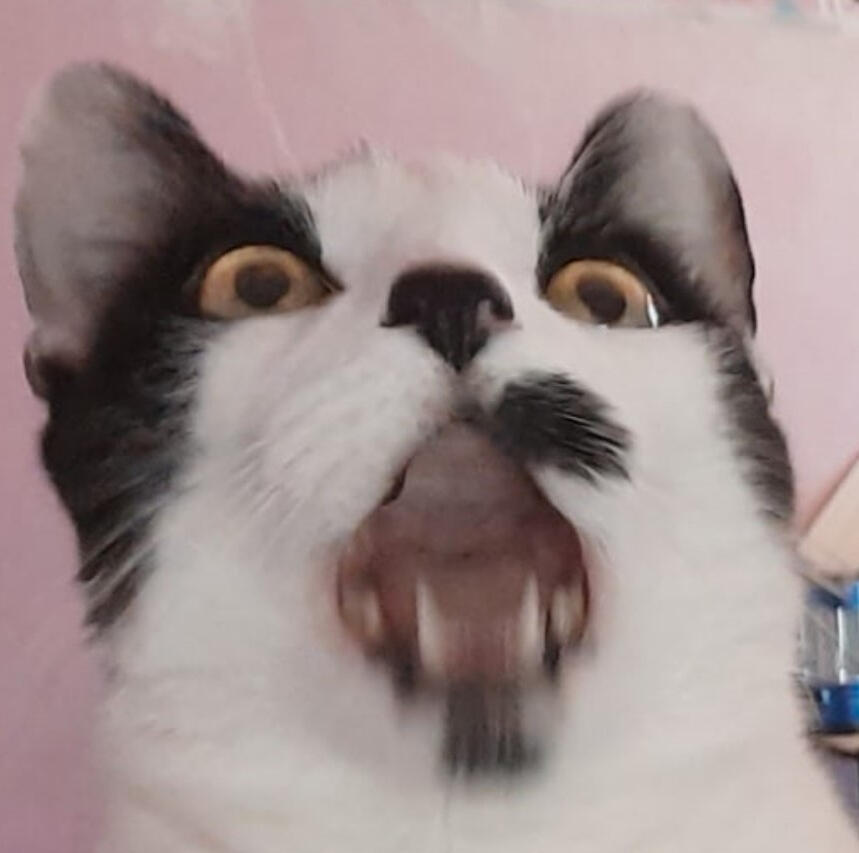
BeldamesWhilst Lumes are the most revered, Beldames are the most feared. These are not a subspecies of their own, but rather are a mutated and experimented on version of Flashers. These Flashers, now referred to as Beldames, are oftentimes missing their iridescent patches, adorned with various scars and wounds, and stitched together with various other body parts of other Cascules. While Beldames have no uniform appearance, they can all be identified by their glassy lifeless eyes and aggressive behaviour. It is advised that if one encounters a Beldame that they keep their distance. These creatures roam alone, never being seen travelling in a herd. It is believed that, while likely still fertile, they are unable to have lambs due to their violent nature, oftentimes killing any potential partners. When observed, they are seen performing rituals that neither common Cascule nor human understand. At night these deformed Cascules will hunt Lume barren herds, kidnapping Sirens to use as sacrifices for aforementioned rituals.
Breeding
So, you've decided you want your happy couple to start a family of their own? Fantastic! Cascules make excellent parents. While usually very docile and passive, when it comes to their young they can become extremely aggressive and violent towards anyone, or anything, that they perceive as a threat. They usually monogamous, and will only have lambs with their partner, but exceptions to this rule do apply.Most births between compatible subspecies result in 1-4 lambs, with 2 lambs being the average. When resources are low, or if living in a particularly large herd, parents of four lamb litters may abandon one or two of the lambs, opting to keep the strongest. The abandoned lambs are usually picked up by a different Cascule couple. Lambs that are not adopted, however, are unable to care for themselves and succumb to the harsh elements of nature. This is not a decision that parents will take lightly, as sacrificing one lamb for another takes a heavy emotional toll on both parents as well as the surviving lamb.If you are an observant reader you may have noticed that it was mentioned that subspecies must be compatible. While all species can crossbreed with one another, not all crossbreeds will result in viable and fertile lambs. Crossbreeding generally results in higher mortality rate amongst lambs as well as smaller litters, the average for crossbred litters only being a single lamb. This being said, what subspecies can crossbreed, and what will happen if I breed two that aren't compatible?
Sirens and Flashers (1 x 2)
Breeding Sirens and Flashers will result in mostly viable but infertile lambs. Some instances of nonviable lambs do occur, but the majority are carried to full term and born without any issue. These lambs however are almost always infertile, with fertile specimens being an anomaly and usually praised and protected by the rest of the herd. The resulting subspecies of lambs between this pairing is an 60/40 chance of either parent, with bias towards the mother's species.
Sirens and Lumes (1 x 3)
Breeding Sirens and Lumes will result in mostly nonviable and infertile lambs. Scientists believe that they are too far removed genetically for lambs to be carried to full term. Pregnancies are rare to take, and most pregnancies between this pairing don't progress to the point of noticing. The carrying parent often don't realise they were ever pregnant at all. Lambs that do make it to full term are born healthy, but always infertile. It is a 95% chance of the Siren subspecies being born.
Flashers and Lumes (2 x 3)
Breeding Flashers and Lumes will result in mostly viable and fertile lambs. Some instances of nonviable lambs do occur, but the majority are carried to full term and born without any issue. Crossing between these two will always result in single lamb litters. It is estimated to be about a 15% chance of these resulting lambs of being infertile. It is often observed that lambs between this pairing are 90% likely to be the Flasher subspecies when born.
Lumes and Lumes
While not a crossbreed, we find it important to talk about this rare pairing regardless. While other subspecies will most likely never meet a Lume, Lumes seem to be drawn together by some unknown connection. The Lume appear to be polyamorous when encountered with their own kind, and will mate to bear lambs. Scientists believe this is due to a subconscious biological understanding that they are at risk of dying out. Pairings between these species will always result in one lamb. It has been observed that a little less than half of the lambs between a lume pairing will come out as a flasher instead of a lume, leading scientists to believe that the genetics to cause one to be born a lume are recessive. Luckily for the species, lambs are almost always viable and fertile.
Mutations
As with breeding between any species, mutations are bound to incur. While most of these mutations are harmless, and cause no strife to the Cascule other than visual difference, some mutations can significantly alter the Cascule's life and possibly shorten it's lifespan. Below are a list of observed mutations in the Cascule species. Scientists are still updating as new ones emerge.- Hairless
- Overgrown Fur
- Hornless
- Piebald
- Giagantism
- Dwarfism
- Melanism
- Albino
- Leucism
- Erythrism
- Dull (unable to use iridescence or bioluminescence)
- Blind
- Deaf
- Polydactyly
- Two heads (lethal)
- Conjoined twins (lethal)
- Extra limbs (potentially lethal)
- Chimerism
- Infertile
- Glass Skin (Able to see organs through skin)
- ??? More are still to be observed!-
Their World
After a great war the Earth that Cascules found themselves inhabiting was left nearly void of human life and the creatures around them mostly unrecognisable to the animals they once were. Nuclear fallout and radiation facilitated the rapid evolution and mutation in not only the Cascules themselves, but the native fauna as well. The fraction of remaining humans are scattered in small groups amongst the planet, making communication difficult, if not impossible. Due to high radiation levels they often do not wander from their safe zones without specialised equipment. Cascules are highly wary of humans, most often fleeing from them when encountered.The landscape has mostly recovered from the devastation wrought by the fallen bombs, with nature having taken over the ruins of once grand cities and venues. Small towns and cities have been swallowed up in entirety, returning to lush fields and bustling forests, the only remnants of their existence now only being memories. Cascules are encouraged by their parents to stay away from the cities, but some Cascules disregard their parents concerns and wander into the overgrown abandoned concrete jungles. The cities remain largely untouched by wildlife, with some cities being nearly perfectly preserved, apart from the plant life that has taken over.Cascules inhabit all regions terrains and climates of the planet aside from the cities.Current Known Species
- Cascules
- Humans
- Telks (Non Adoptable)
- Various Unnamed Species
How do I get my first Cascule?
There are a few different ways to get your first Cascule! The easiest way is to make one! We allow you to make two Cascules free of charge. These two Cascules can be of either the Siren or Flasher subspecies. Feel free to read up on the differences before you make your decision!If you are not artistically inclined you may commission another person to make a Cascule for you, you may buy one from someone else, try your luck in a giveaway, or grab an adopt or gacha during the migration events, found in the discord.How do I get more MYO slots?
You can purchase MYO slots using either shards, the free currency awarded in the discord server, or USD by messaging Eve.